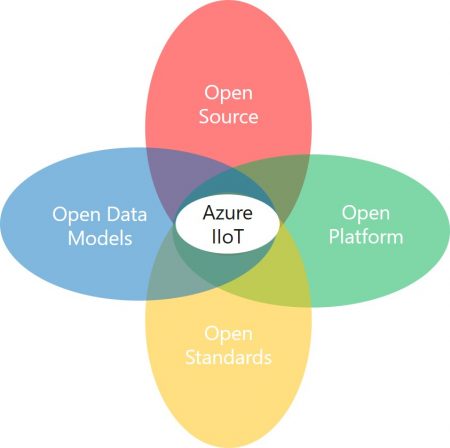Microsoft is 100% committed to OPC UA. In fact, Microsoft was the first cloud vendor to embrace OPC UA back in 2015, has contributed more open-source code to the OPC Foundation than everyone else combined by a factor of 10, is actively contributing to the continued development of the OPC UA specification through the various OPC Foundation working groups, is active within the various boards of the OPC Foundation and still has by far the best support for OPC UA from all Industrial IoT cloud platforms available today, supporting OPC UA both on the edge and in the cloud.
So why do we do it? Well, it fits perfectly into our openness strategy that allows our customers and partners to stay cloud vendor independent, which is very important to them:
- Open platform. With Azure, customers decide what they want to use. They can mix and match infrastructure, applications, and services at will. We provide reference architectures and use cases to support security, scalability, and performance. But customers are in control.
- Open source. Our IIoT services are all open source and OS independent. We publish them on GitHub for anyone to use. Using the MIT open source license, we encourage you to integrate them into your own products with ease. However, we also support them and are responsible for their quality.
- Open standards. Open communication formats and protocols break down barriers. We want you to be able to focus on innovation with your data, rather than spending your time accessing it. We have best-in-class data access to proprietary systems and convert data into open standards.
- Open data models. Data models determine how easily data can be analyzed. We create solutions that normalize proprietary data models using open standards, which simplify your analytics pipeline. Also, when you send data to Azure, that data is yours. We make it easy to put data in, and just as easy to get data out. Of course, that also means keeping your data secure, which explains our intense focus on IoT cybersecurity.
But there is another reason: OPC UA is quickly becoming the de-facto data modeling standard in the industrial space, also fueled by the great work the German VDMA is doing in this space by standardizing each machine type’s data model for the first time, of course leveraging OPC UA. Other organizations are taking note and following with similar efforts, like, most recently, UMATI and NAMUR.
With so much momentum behind OPC UA data models, it is not surprising that BMW and Microsoft chose OPC UA as the data modeling standard for the Open Manufacturing Platform. So while other companies still try to lock their customers in to a closed ecosystem or force them to use a proprietary data model, Microsoft is the one place in the Industrial IoT space where customers are free, because openness gives you choice.
Click Here to Learn More

